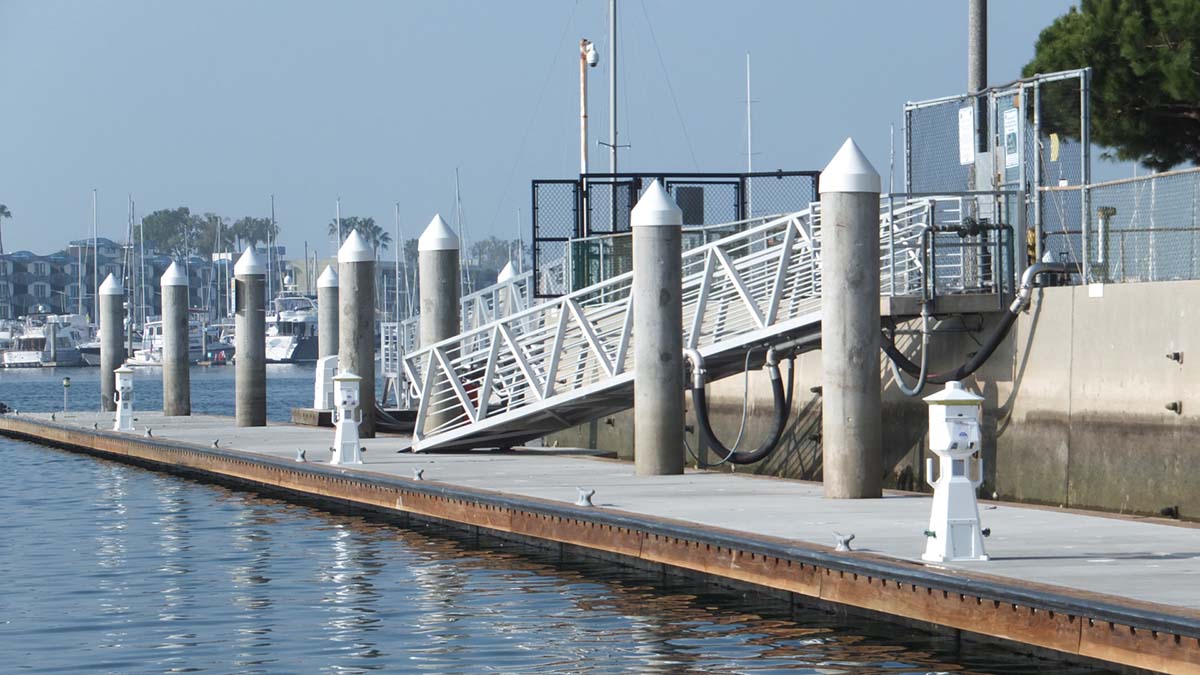
BIG Time – And Other Ways To Get Money For Nothing
Published on March 5, 2023Each year the marine industry faces more and more oversight from big brother. In some cases that can be helpful and in other cases it can be challenging. Big brother has a job to do but sometimes their approach can be quite daunting, and can result in marinas playing catch up or accelerating capital projects to bring operations into compliance with the various regulations.
The best advice I can offer is to try to stay ahead of the game. That means implementing compliance in both operationally- and cost- effective ways. Sounds nice, but what does this mean and how does one pay for it, especially when things are tight?
For the first, it requires having a fluid multi-year plan that integrates operations, maintenance, capital projects, and forward thinking of how to obtain getting to the next level. In some respects, this can be relatively easy to do, but more often than not gets widely overlooked.
The second typically requires a bit more doing. But while big brother watches over all of us, sometimes the government powers that be also have tried to be helpful in providing funding for various regulatory compliance initiatives and/or desired development/redevelopment – therein the “money for not quite nothing.” The biggest issue for many to deal with in getting it is the time it takes, which can be long, to get the approvals, even when the particular agency really likes the project. That is where having the multi-year plan for improvements also comes in.
It should also be noted that for most fundable projects one needs to get through the paperwork and approval process PRIOR to undertaking the project. Retroactive reimbursement is almost unheard of in U.S. governmental funding, with one possible exception being FEMA, but even then, there are steps to be taken before funds can be spent and be reimbursable. And, of course, more often than not there are conditions and strings attached to the funding.
There are specific equipment programs as well as operational programs.
BIG Program.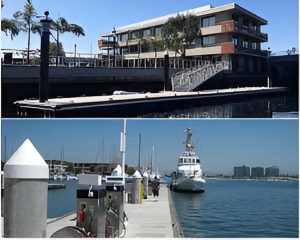
Yes, this is the “BIG” in “BIG Time” – the U.S. Boating Infrastructure Grant program, which is a federal program run through the U.S. Fish & Wildlife Service and largely administered by the states to
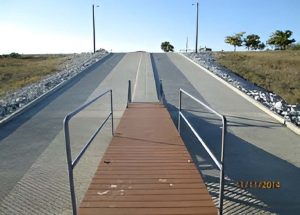
provide funding to promote nautical tourism and for greater access to the recreational, cultural, historic, scenic and natural resources within the United States for boats that are 26 feet or more in length (large cruising boats). The program is aimed at non-trailerable transient boating with stays not exceeding 15 days. The funding is for facilities construction or renovation projects that are designed to last at least 20 years, are in waters with greater than or equal to 6 feet of depth at the lowest tide, and that provide security, safety, and service (including a pumpout station within two miles for overnight facilities).
The program is divided into two segments. Tier 1 is for funding of up to $200,000 that is decided by a state in that state’s competition, but the maximum of the total moneys available under Tier 1 per year per state is $200,000 per year. Tier 2 is for funding up to $1,500,000 per grant, which is based on a national competition (multiple grants to a given entity are allowed, but must be in separate years). For the 2022 cycle, 13 grants were awarded ranging from $208,000 to the $1.5 million limit, for a total of just over $15 million.
The funding can include (a) boat slips, piers, mooring buoys, floating docks, dinghy docks, day docks, and other structures for boats to tie-up and gain access to the shore or services; (b) fuel stations, restrooms, showers, utilities, and other amenities for transient-boater convenience; (c) lighting, communications, buoys, beacons, signals, markers, signs, and other means to support safe boating and give information to aid boaters; (d) breakwaters, sea walls, and other physical improvements to allow an area to offer a harbor of safe refuge; and/or (e) equipment and structures for collecting, disposing of, or recycling liquid or solid waste from eligible vessels or for eligible users.
Each state can make its own determination of additional requirements – for instance, some states have reserved the Tier 1 funds for state-owned facilities.
Applicants’ minimum funding requirement is 25 percent, but projects with a match higher than 25 percent will receive additional points during evaluation.
The matching funds for the 2022 awardees ranged from a low of about 35% for Port Townsend, Washington to a high of roughly 152% for Safe Harbor’s Port Royal Marina in South Carolina.
This program requires a well-thought-out presentation, and while it is a lengthy process and faces a rigorous review and competition, it can be a major source of funding for meaningful projects.
Pumpouts
One of the easiest and well-funded programs in the United States is for pumpout facilities under the Clean Vessel Act, where today funding can be for up to 75% of the costs of construction, renovation, operation, and
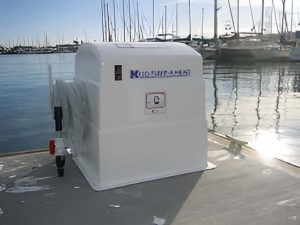
maintenance of pumpout stations and waste reception facilities to meet the needs of recreational boaters. This can involve much more than just the cost of the pumpout device – it can include consultants and professionals for the design and obtaining permits, infrastructure (including site preparation, signage, trenching and piping) as well as equipment, installation, personnel to operate same and maintenance costs. The 25% that must be funded by the applicant can be in terms of actual expenditures as well as in-house labor and in-kind services. A major string for this (and other federally funded projects) these days is that all equipment, steel, etc., must be made in the United States.
Additional strings are that the pumpout must be open for use by the public, and if a charge is made for its usage, it cannot exceed $5.00. Since most facilities tend to charge little if anything for pumpouts, this has not tended to be an issue for most applicants. This program has been extremely effective in helping make pumpout facilities widely available throughout the country.
Both the pumpout and BIG programs, along with various other incentive and research programs, are funded through the Wallop-Breaux Trust Fund, which is a fund created by placement of a portion of the tax on boat fuel and various equipment sales for use in the recreational boating field.
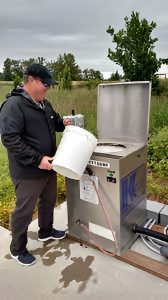
As mentioned in my recent article on power washing, for quite some time I have been advocating for the Clean Vessel Act to be expanded to include the handling of process water from power washing. To do it right can be very costly, and many states these days seem to have unclaimed money left over for pumpouts. This would be a significant benefit to marinas and in helping to keep our waters clean.
Other Approaches
There are other U.S. federal and state approaches with potential funding sources such as FEMA for Building Resilient Infrastructure and Communities as well as Flood Mitigation Assistance, HUD CDBG (Community Development Block Grants), Disaster Recovery Programs, state economic development, waterways programs and other programs that foster specific goals. Every state and region has their own specific goals on how to upgrade and improve their waterfronts. It is a hot topic today, particularly with increasing emphasis on dealing with climate change and sea level rising. Many programs have funding resources. And, of course, similar programs can be found in most countries.
Partnering with one or more public entities can also make funding available for various components of a project and/or allow for reduced costs that otherwise might not be available to a private entity. Properly packaged proposals allow for accomplishment of various public and marina goals. Like most things in life, there are yin-yang’s involved, and business judgments have to be made as to the benefits and concerns. But, by and large, properly planned and partnered projects can be very meaningful to accomplishing short and long term goals. Many times breaking projects down into segments allows for partnering on specific segmented items. Such approaches could include things like community protection for breakwaters, public access boardwalks and associated shoreline protection, green infrastructure as well as utilities that extend to and beyond the marina.
Not long ago I was surprised to see a series of maintenance dredging projects receive funding under a program for improving coastal resiliency. Not what you would typically expect, but the projects were well presented and the state agreed that they were eligible. Another approach one might consider on the dredging front if there is a federal project or similar government anchorage or channel of some sort adjacent to your site, is to piggyback on the cost of testing, which often is excessive, if undertaken in conjunction with the testing for the federal project. Likewise, one may be able to obtain a lower per unit cost for testing and dredging by working with the same contractor undertaking the federal project. Similarly, working with others in the area and forming a dredging group can have comparable benefits.
Clean-up and development of brownfield areas may also be eligible for various sources of funding. A brownfield is a property the expansion, redevelopment, or reuse of which may be complicated by the presence or potential presence of a hazardous substance, pollutant, or contaminant. There are various levels of funding available and working in partnerships with state, regional or local organizations (public or private) can be very helpful in obtaining funding. This has been readily undertaken for development of upland real estate projects, typically with creating park land along the waterfront. It has also been successful for marina projects, but due to the length of time and other reasons, has not been as widely used as it might be.
The biggest takeaways I can provide are to plan ahead, understand the objectives of various grant programs, and carefully tailor one’s proposal to show how the desired project is beneficial in accomplishing those goals.
While there may be no such thing as a free lunch, as there are most always strings attached to funding sources, it just makes sense to take advantage of the carrots that big brother sometimes offers, as there is certainly no shortage of sticks. Applications for funding can be successful when properly presented and one fully understands the respective goals and ways to achieve them. Yes, it does take time, diligence and a lot of patience. But in the end, it can be well worth it. After all, who wouldn’t want some money for nothing – even if it isn’t quite free.
Dan Natchez, CMP, is president of DANIEL S. NATCHEZ and ASSOCIATES Inc., a leading international environmental waterfront design consulting company specializing in the design of marinas and marina resorts throughout the world. He can be contacted by phone at 914/698-5678, by WhatsApp at 914/381-1234, by email at dan.n@dsnainc.com or online at www.dsnainc.com.
| Categories | |
| Tags |





